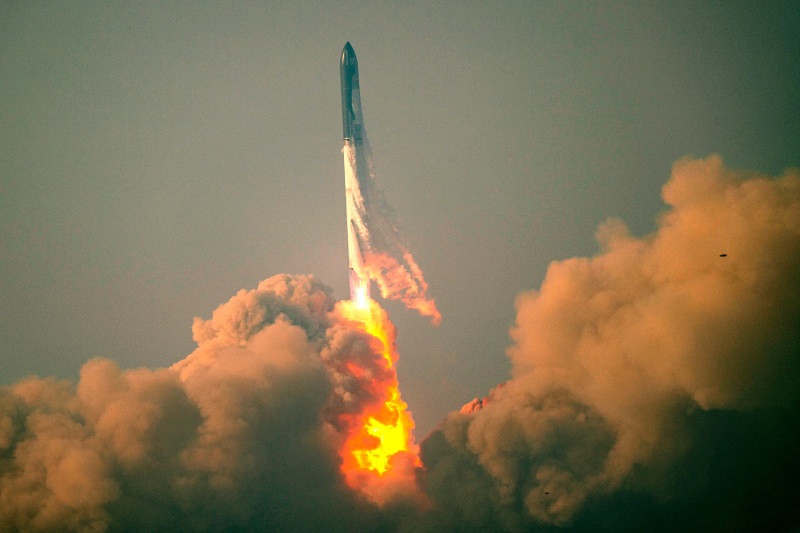The newest Starship vehicle from SpaceX has started to show off its impressive power.
SpaceX fired up the Raptor engines of the Starship upper-stage prototype, known as Ship 28, in a “static fire” test. The spacecraft was anchored to the pad at the Starbase location in South Texas.
In the next several weeks, SpaceX plans to send Starship on its third test trip, which Ship 28 is currently preparing for. And it seems the timeline is still on track because today’s trial proceeded smoothly.
In a post on X (previously known as Twitter) this afternoon, SpaceX stated, “Flight 3 Starship completed a full-duration static fire with all six of its Raptor engines.” The post also included video of the test.
The massive first-stage booster known as Super Heavy and the 165-foot-tall (50-meter) upper-stage spacecraft known (perhaps redundantly) as Starship are the two components that make up Starship.
These two stages are propelled by SpaceX’s next-generation Raptor engine and are intended to be entirely and quickly reusable. As mentioned in SpaceX’s post on X today, Super Heavy has 33 Raptors, and Starship is powered by six of them.
Starship has only made two flights so far, during test runs in November and April of this year. The goal of both missions was to send the upper stage as far around the planet as possible, with a splashdown planned in the Pacific Ocean not far from Hawaii.
That was not accomplished by either flight. During its April launch, Starship encountered several issues, chief among them being that both of its stages failed to separate as scheduled, and SpaceX purposefully destroyed the spacecraft four minutes after takeoff.
Among the many notable achievements of Flight 2 were stage separation and a nominal first-stage engine burn. However, it also came to an early end when the upper stage exploded eight minutes after launch.
As seen by the ongoing testing of Ship 28 and its flight partner, Booster 10, a Super Heavy prototype, SpaceX intends to launch Starship back into orbit as soon as possible.
But when it will occur is unknown. SpaceX might still have to wait a while for a launch authorization from the Federal Aviation Administration, even if testing goes smoothly. The FAA is in charge of the investigation into what transpired on Flight 2, and it won’t issue a license until the investigation is concluded and SpaceX has taken any necessary corrective measures.





